How fantastic to chat with two of the world’s leading cover croppers who are reaping the benefits from their multispecies cover cropping. Look back on last week’s blog for the background on cover cropping, and let’s now get to learning from Gabe Brown from North Dakota and Gail Fuller from Kansas, who I have spoken with last week to get some real life experiences of this technique. To me, the most truly amazing improvement that these farmers have affected and measured over time is rainfall infiltration rates. Testing on Gabe’s farm shows increases from initial rates of ½”/hour (12mm) to 8”(200mm)/hour – a 16 fold increase! Gabe says “we can produce more grain on a lot less rainfall”. Similarly, Gail Fuller reports at least a 6 fold increase – from less than 1”(25mm)/hour to 6.5”(163mm)/hour in the high clay soils of Kansas.
This allows them to optimise rainfall capture from the less frequent, but more intense and heavier rainfall events being experienced in recent years. This infiltration then also prevents erosion and nutrient loss from what would otherwise be runoff rainfall events.
Sometimes we find ourselves skipping straight to thinking about why a technique won’t work in our environment, but I encourage you to think, ‘how can I adapt this so that it could work in my environment?” So, before we get too concerned about this not working in a dry climate – I will tell you that Gabe Brown has a 16 inch rainfall (10” falls as rain and 6” as snow – certainly not a wet environment), and things are well and truly working there, where Gabe achieves grain yields 25% above the district average, with just 1/3 of the input costs (more on the input changes later). He has temperatures typically ranging from 36oC (98oF) to minus 34oF (-30oC), with 90oF (32oC) common for much of summer.
If you are considering starting out cover cropping, the first cover crop is likely to be ‘ugly’, as Gail puts it. ”Understand however, that while it may not look like a great success visually, there will be lots of useful and wonderful things happening below ground – even with a poor crop” Gail assures. ”Remember, we have 100 years or so of a ‘dead’ system to repair, so don’t lose heart.”
Just to refresh, remember the messages from last week for a healthy soil?
- Live roots growing as much as possible
- Increase the diversity in species
- Limit soil disturbance
- Ensure great ground cover
- Add animals to the system
So, in order to achieve the above steps to a healthy soil through cover crops, how are farmers fitting these cover crops into their cash crop systems?
Fitting it into the system
Gabe Brown in North Dakota typically sows his cash crops (such as spring wheat, triticale, oats, barley) in late April, which will go on to be harvested in August. The cash crop is stripped and the cover crop is sown soon after in the same month of August.
They will then have the first killing frosts by about 1st September (when summer warm growing species will be killed) and a winter freeze by about 1st October (which will kill some winter species). It is evident then, that growers in this region only have a very short window in which to grow their cover crops, so they need fast growing cover crops. Species which suit this include brassicas, radishes, turnips, vetch, millet, oats and barley. Depending on species choice, some species can survive the freeze, but many will be killed.
So, at the moment at Gabe’s farm, he finished grazing a cover crop a fortnight ago, and went on to plant another 20 species cover crop for his cattle, including sorghum, sudan grass, cowpeas, and other warm season species, as well as some cool season varieties, the performance of which will vary depending on the season.
Another option is to plant a cereal rye, winter wheat & vetch mix, which is planted in the U.S. fall or autumn, which will overwinter and grow again in the spring.
Gabe typically relies on the freeze and/or livestock grazing for terminating his cover crops.
This is Gabe (left) and Gail, together sharing their experiences with other farmers.
Gail in Kansas
Gail Fuller plants his cover crops after the harvest of his cereal cash crop. He will plant a mix of:
- Half to two thirds of the full rate of warm season species
- Full rate of cool season species
Most of the seeds will come up and the warm season species will take off – the sudan grass, cowpeas etc. These will shade the cool season species which remain cooler in the shade of the taller warm season species, but they will most likely struggle until after the first frost arrives, when part two of the system kicks in. The warm season species will die off with the frost, and the cool season species will receive sunlight and their growth will then take off. Some of these will overwinter and they will be terminated with a herbicide in Spring.
In a typical year, Gail will have a wet spring (during their cash crop planting time), and with a huge amount of mulch created from the cover crop, they have to be careful that it’s not too wet to the point that it would hamper their sowing. You can see some ball rolling dung beetles among the litter in the image below.
Having said this about the effects of a great lot of mulch on planting, a 2-3 inch layer of mulch can be all but gone in 6-8 weeks due to the amazing amount of soil biology activity! This is the biggest challenge for both Gabe and Gail– keeping material on the soil surface with soils that so fervently break it down.
This material is all entering the soil as it is broken down, which has allowed considerable increases in soil organic matter. Gabe has increased levels from 1.7-1.9% in 1991, when he bought his farm, to 5.3-6.1%. He has been cover cropping since 1995, but this began as single and dual species crops.
Gail has had similarly impressive results with organic matter levels going from 1.7-2.2% in 1997 to between 3.5 and 6.4% (as measureed in 2012).
Planting
The cash crop
The question is how to get sown into 2-3 inches of plant material or into a standing cover crop which has not been sprayed out yet? Well, both Gabe and Gail plant with a disc planter, but neither use a coulter in front of the discs. Instead, Gail tells me he weights his planter down in order to assure that he cuts through the trash. Gail has 900lbs (408kg) of tractor weights on the back of his planter. Other methods for weighing planters that farmers have used include filling insecticide boxes with gravel!
Gail also makes sure he has disc openers in good, sharp condition.
The cover crop
In planting mixed species crops, there may be both small seeded and larger seeded species present (from cowpeas and barley to clover seed). Gail chooses a planting depth that is in between the ideal depth for small and large seeds, which is about 1-1¼ inches (2.5 -3.2cm). While this may leave some of you reeling with the thought of planting clover seed so deep, the experiences of cover croppers is that the bigger seeded species push up through the soil, paving the way for the small seeded species.
Broadcasting of the cover crop seed in autumn or fall, behind a high residue crop like a corn crop can reportedly work well too. Cereal rye seems like an easy species to work with for cover crops and broadcasting it prior to rain can work well.
When broadcasting seed of mixed species with both small and large seeds, a traditional spreader will likely not give an adequate outcome, with the larger seeds travelling further and causing uneven plantings. Spreaders which use air to deliver seeds to small spinners at the heads along the width of the machine will give a more evenly spread crop. There are variations of such a machine.
More planting options are available to irrigators, who can aerially broadcast a cover crop into a corn or soybean crop prior to a late-crop irrigation.
Dramatic drop in inputs
With fertilisers making up a huge portion of farmers’ inputs, imagine completely eliminating fertilisers from your bill? This is what Gabe Brown has achieved – whilst still producing 25% above the regional average yield for his cash crops. Gabe has cropped without the use of fertiliser for the last 6 years.
He has also eliminated the use of insecticides and fungicides – what a great place to be.
Now while eliminating the above costs of pesticides and fertilisers, there obviously are still costs involved in seed purchase and the extra planting of the cover crop. Gabe reports his costs at 1/3 of what they previously were. There are also no GMO’s used.
Gail has had similar positive outcomes with regard to input quantities. He has cut fertiliser quantities by at least 25%, some paddocks by 50-60% and some by even more. Of the fertiliser Gail does still use, there is no anhydrous ammonia but rather liquid types and urea. Herbicide usage is down 20-25% and there has been no fungicide used in 3 years, and just one insecticide in 5 years. The past two years Gail has not used any seed treatments. The following corn crop of Gail’s has been grown using no commercial fertiliser.
Inoculation of certain legume varieties is no longer needed. This is the varieties that have been in the cover crop mixes for longer periods. Species introduced more recently to the mix are still requiring inoculation, but Gail may be able to cease this with continued inclusion in the cover crop mixes.
How is the removal of fertiliser possible?
The diversity and constant presence of actively growing roots means that soil microbiology build in numbers. These soil ‘critters’ make nutrients available to the plants, in exchange for the root exudates on which they feed – (see my previous blog, ‘There’s Carbon, then there’s Carbon). Gail informs me that Darwin wrote of dissecting earthworms, only to discover that they had parent material from the soil in their guts. They are breaking down this parent material and making new nutrients available in the process. There is so much more for us to understand about life underground, isn’t there?
Natures’s Way
Funnily, the photos of these U.S. multispecies or polyculture cover crops from farms like Gail and Gabe’s remind me of what would be considered a really ‘out of control fallow paddock’ in a traditional farming system from my area. This is due to its random diversity of species, and what would be a few volunteer sunflower or sorghum type plants. If this is what a ‘let go’ fallow looks like – then it is nature’s preferred choice of how to repair the soil after years of fallows and monocultures. It is this diverse array of plants that looks much like a multispecies/polyculture cover crop, so I reckon Gabe and Gail must really be on the right track! Doesn’t nature know best??
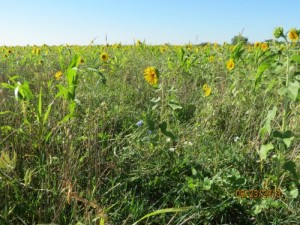
And it is observing nature that can tell us how our farming systems are going. Look for the presence of things like:
- Insects
- Spiders
- Flying insects
- Earthworms
- Biodiversity
- Anthills
- Birds
as gauges for the health of your land.
Termination
Neither Gabe nor Gail use glyphosate at all, because of its effect on soil biology, but they do use other herbicides which are softer on soil biology, but they are limited as much as possible.
Gabe avoids herbicides in his cover crop terminations, by either relying on the winter freeze of North Dakota or on livestock grazing. When intending to terminate the crop, the timing of the graze is important to ensure a kill of the plants and no regrowth. Gabe’s grazing is done with high stock densities to ensure the cover crop is adequately knocked down or grazed off.
In order to get an effective kill of the multi species cover crops, Gail terminates his crops with herbicides – choosing products like Paraquat, Sharpen (Saflufenacil) and Select (MCPA, MCPB mix), which seem to be softer on soil biology. Gail would like to eliminate the herbicidal termination, but at this stage the herbicides are being relied on for an effective kill. The mechanical crop rollers or crimpers (mentioned last week), are only proving effective at killing cover crops of a limited species number – such as a cereal rye and vetch crop or an oat crop. A high number of species in the cover crop (or polyculture), brings issues of varying maturity and growth habit – making the rollers unreliable for a high percentage kill.
Gail could eliminate a herbicide spray from his system, by opting for a simpler cover crop and then rolling or crimping it for termination, but the many advantages of the synergism of the multi species crop outweighs the potential elimination of this herbicide.
Gail will often plant his cash crop first – into the standing live cover crop, and then spray it out.
Plant back periods are obviously important if you were considering herbicidal spray out.
how to get started
Here are some suggestions if you are interested in giving cover cropping a go.
As mentioned above – don’t expect the first cover crop to be amazing, but remember this doesn’t mean it isn’t working. It is busy working underground.
There may not be a yield advantage until the 2nd or 3rd year cash crop.
Gail suggests starting out with something that ensures you can still sleep at night. If this means starting with just a 2 or 3 way mix in your cover crop, then start that way. Having said that, when we start something new, our biggest fear of the new practice is ensuring the results from it and from all that I have learnt, a more biodiverse mix may help to get you to get runs on the board quicker.
Gabe warns that when starting out, nutrients will become tied up in the biomass of the cover crops and in the microbes. He suggested the idea of actually increasing fertiliser or manure applications in the first few years to accommodate for this, which can be backed off as the soil nutrition improves and the biology increases.
It is the carbon:nitrogen (C:N) ratio which influences the likelihood of mineral or nitrogen tie up. This early tie up can partly be avoided by choosing the right combination of cover crop species, which gives an optimal C:N ratio. An ideal ratio of organic matter for microbes is 24:1, but Gail suggests a lower ratio crop when starting out. Mixes with soft species like peas and oats (which are a strong supporter of mychorrizae) will help to achieve a mid to high teens ratio of C:N. As a soil system progresses, with greater soil biology numbers, this ratio can be increased, to the point of wanting a ratio of 30 to 40:1, which will help to slow it’s breakdown. This is what Gabe and Gail are now seeking in order to keep their crop residue on the soil for as long as possible. High C:N ratio species include things like sorghum or sudan grass.
Livestock in the system
Both men sing the virtues of including livestock in the system. By adding them we are just adding another layer of the prized diversity. Ruminants’ guts are full of microbes, and the livestock dramatically increase the soil’s biology, according to plfa tests (a test widely used for measuring soil microbiology) taken out at Gabe’s farm. By grazing the cover crop, the cycle of growth, sheering of roots and regrowth, is stimulated, allowing increases in the release of root exudates into the soil which supports more microbes. This is compared with the one growth cycle opportunity from that crop if not grazed.
How would cover cropping work in my environment?
How do you think you could make cover cropping work in your environment? In my area on the Liverpool Plains of NSW, there are defined summer and winter crop growing periods. A cover crop could be grown in either of these seasons – a summer cover crop with winter cash crop or a winter cover crop with a summer cash crop.
After a winter crop harvest (let’s say wheat) in December, a multi species cover crop could be planted straight after; this could include summer species like sorghum, cowpeas, mungbeans, millet and sunflowers, as well as winter growing oats, canola, brassicas, clovers and faba beans. The summer species would do well initially, with oats and fabas not doing much, but with our first frost around the end of April, the summer species would die off and the oats, faba beans and winter species would start to hit their growing season. This crop could be terminated prior to the planting of wheat, barley or chickpeas in late May or June.
Livestock could be introduced for grazings through February and March.
The reverse could be done for summer cash crops.
What next for Gabe and Gail?
Because both men are clear on their reasons for practicing cover cropping, which is for the health and regeneration of the land and for the health of us living from it, the next step for them is obvious. It is to begin testing their produce for nutrient density. They want to be able to see and show that not only is their farming system better for the land, it is also better for those consuming their produce.
And a varied produce it is – both have grains, cattle, sheep and chooks (or chickens if you’re from anywhere other than Australia), with pigs either present or planned. It’s all just more diversity.
Summary
These two farms in North Dakota and Kansas that have had cover cropping incorporated into their management, have built resilience into their businesses. They are more able to capture what moisture falls as rain, which creates a better opportunity to produce a profitable crop in a dry year. In the case of a really dry year, there is less risk, as the upfront costs of a cash crop are considerably reduced, while a total grain crop failure is still of some use to their livestock enterprises. Gabe told me of the ongoing drought over the last 4 years, during which the cash crops from the cover cropped systems hang in for longer in the dry times and may even produce where others fail. If that’s not enough, they are having more fun too… and being profitable! Gabe is simply not worried about the price of grains or beef; his diversity of products means he is not at the mercy of corn prices or beef prices and partner this with the resilience of his soils and business is pretty good.
Gabe began cover cropping after 4 years of crop failure – 1 year of drought and 3 years of being 100% hailed out! Although at the time, I’m sure he would have swapped this situation for almost anything, I’m sure he would think differently now because it was this hardship which set him on the path of how to farm without inputs, and to cover cropping and regenerative agriculture.
By sharing our experiences with others, and through the wonderful help and sharing of people like Gabe and Gail, we can hopefully inspire and help others to try different techniques, without them having to go through the hardship!
I would love to hear your thoughts – What do you think would be the challenges with cover cropping in your area?
How do you think you could make it work in your area?

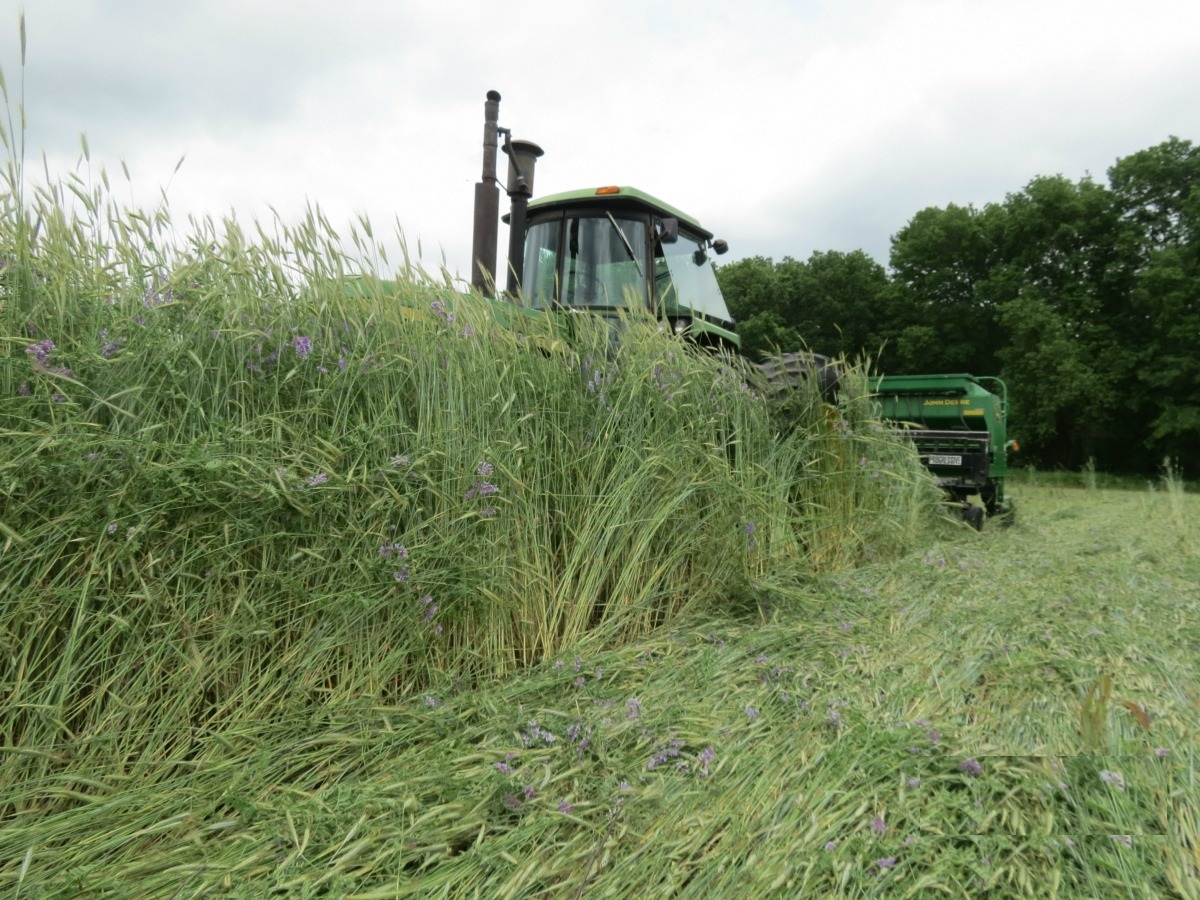
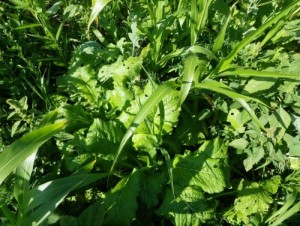
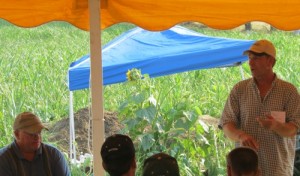
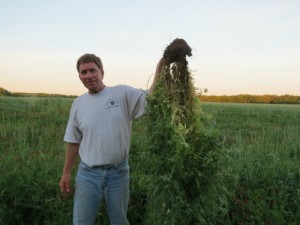
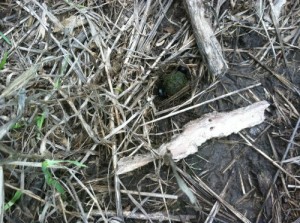
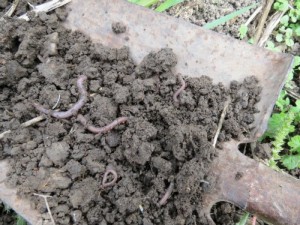
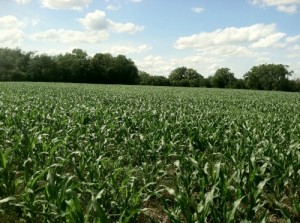
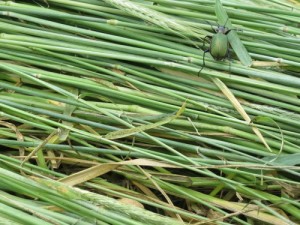
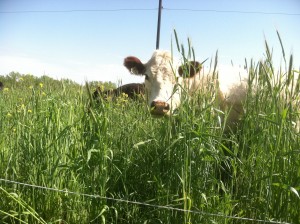
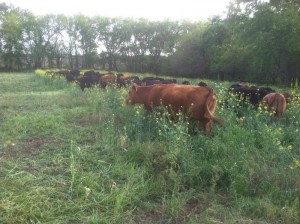
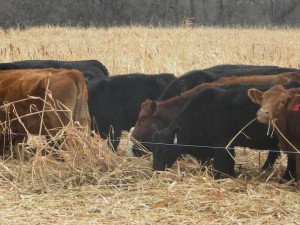
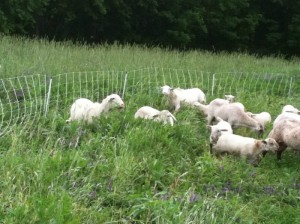
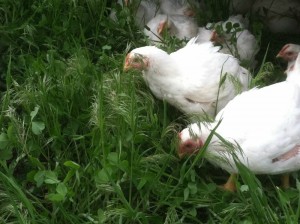
So that would mean that after Dryland cotton one would sow a mix of summer and winter crops then spray out prior to the wheat rotation in May? It kind of goes against the tradition of no weeds to preserve moisture.